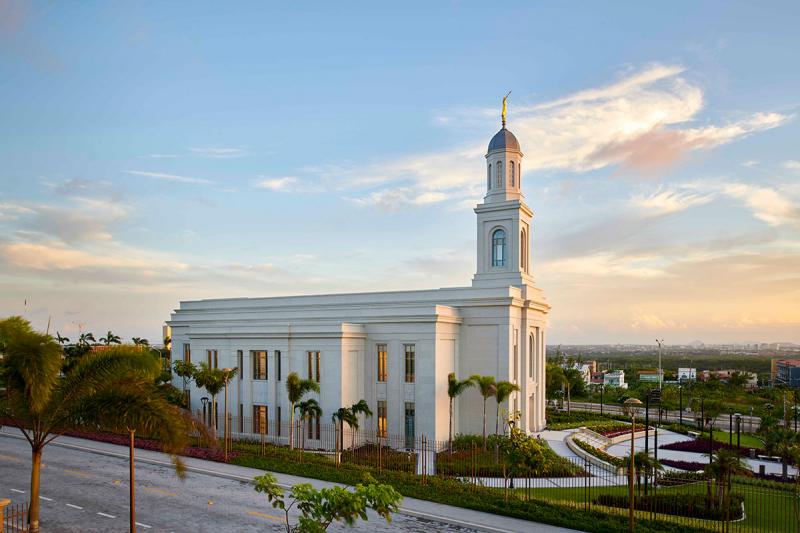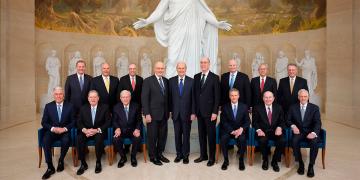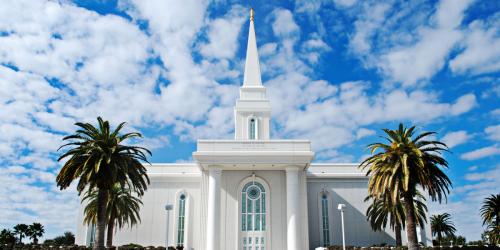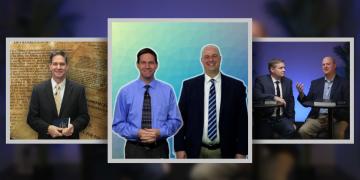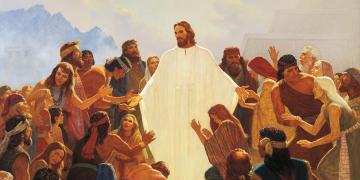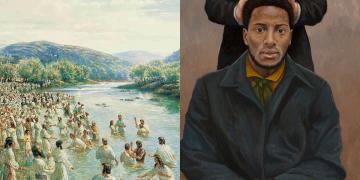You are here
A Collection of Scriptures that Reminds Us of Our Relationship to Christ and His “Temple”
Ephesians 4:11–14 is a well-known passage that declares that Christ called apostles, prophets, and other leaders for “the perfecting of the saints, for the work of the ministry, for the edifying of the body of Christ: Till we all come in the unity of the faith, and of the knowledge of the Son of God.” In this analogy, various leaders and members of the Church are like various body parts and joints that are all necessary for the proper function of the whole body.
Earlier, in Ephesians 2, Paul used different but related imagery to describe the Church. He taught that all the saints were “of the household of God” (Ephesians 2:19). The word “household” comes from a Greek root-word (oikos) which can mean “house” or “temple.” Just as a house or temple must built upon a strong foundation, Christ’s Church is “built upon the foundation of the apostles and prophets, Jesus Christ himself being the chief corner stone; In whom all the building fitly framed together groweth unto an holy temple in the Lord” (Ephesians 2:20–21).
Paul’s analogy draws heavily on two Old Testament passages: Psalm 118, which talks about a “stone” that was refused and then became the “head stone of the corner” or “chief corner stone” (Psalm 118:22), and Isaiah 8, which declares that although the Lord would be a temple for some, he would be a “stone of stumbling” for others (Isaiah 8:14–15). Elsewhere (see Romans 9:32–33), Paul used this same passage from Isaiah 8, but joined it with parts of Isaiah 28, which likewise uses the imagery of the cornerstone of the temple: “I lay in Zion for a foundation a stone, a tried stone, a precious corner stone, a sure foundation” (Isaiah 28:16).
Because of the number of times it is reused in the New Testament, it appears that this group of Old Testament passages (Psalm 118:22; Isaiah 8:14–15; and Isaiah 28:16) may have been part of what is called a florilegium—a collection or anthology of key scriptures on a particular topic. As further evidence of this, if we look at 1 Peter 2:6–7, the same key passages show up again:
Wherefore also it is contained in the scripture, Behold, I lay in Sion (Isaiah 28) a chief corner stone (Psalm 118), elect, precious (Isaiah 28): and he that believeth on him shall not be confounded (Isaiah 28). Unto you therefore which believe (Isaiah 28) he is precious (Isaiah 28): but unto them which be disobedient, the stone which the builders disallowed, the same is made the head of the corner (Psalm 118).
And a stone of stumbling, and a rock of offence, even to them which stumble (Isaiah 8) at the word, being disobedient: whereunto also they were appointed (emphasis added).
Incredibly, these same scriptural passages are often found together in the Book of Mormon as well. In his temple discourse, the prophet Jacob (in Jacob 4:15–17) used a combination of Psalm 118, Isaiah 8 and 28, but with a slightly different emphasis and using different parts of those same verses:
And now I, Jacob, am led on by the Spirit unto prophesying … that by the stumbling of the Jews (Isaiah 8) they will reject the stone (Psalm 118) upon which they might build (Psalm 118) and have safe foundation (Isaiah 28).
But behold, according to the scriptures, this stone shall become the great, and the last, and the only sure foundation (Isaiah 28), upon which the Jews can build (Psalm 118).
And now, my beloved, how is it possible that these, after having rejected (Psalm 118) the sure foundation (Isaiah 28), can ever build upon it, that it may become the head of their corner? (Psalm 118; emphasis added)
Anything repeated so many times in the Scriptures deserves our attention. Peter, Paul, and Jacob all used this messianic/temple collection of passages to indicate that we need to be a part of a temple-like structure. Those who reject Christ and remove themselves from His divinely established Church will find that this decision will be a “stumbling block” in their lives. On the other hand, those who build their foundation upon Christ and His appointed servants will enjoy a “unity of faith, and of the knowledge of the Son of God” (Ephesians 4:13).
Related Articles
Subscribe
Get the latest updates on Book of Mormon topics and research for free


